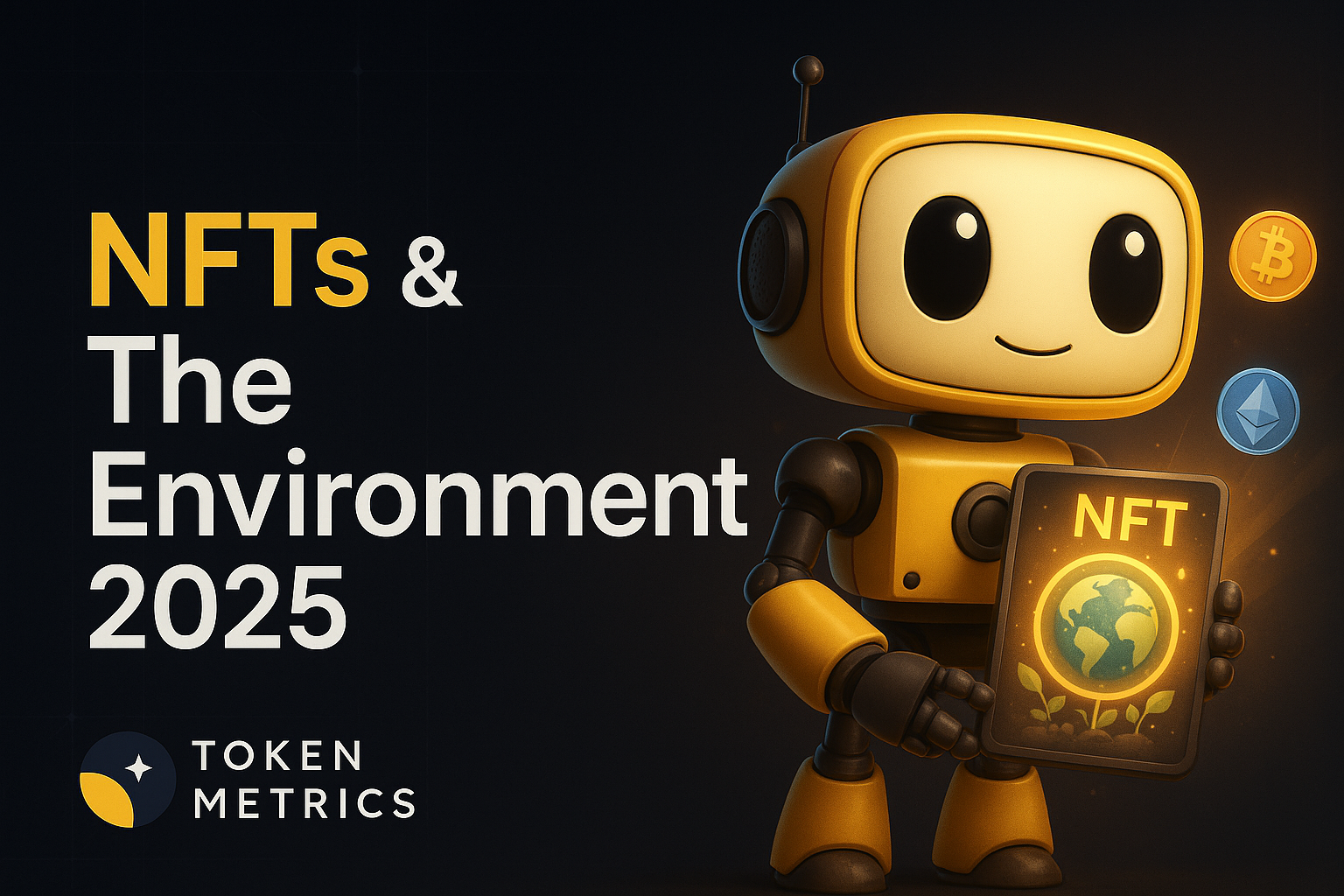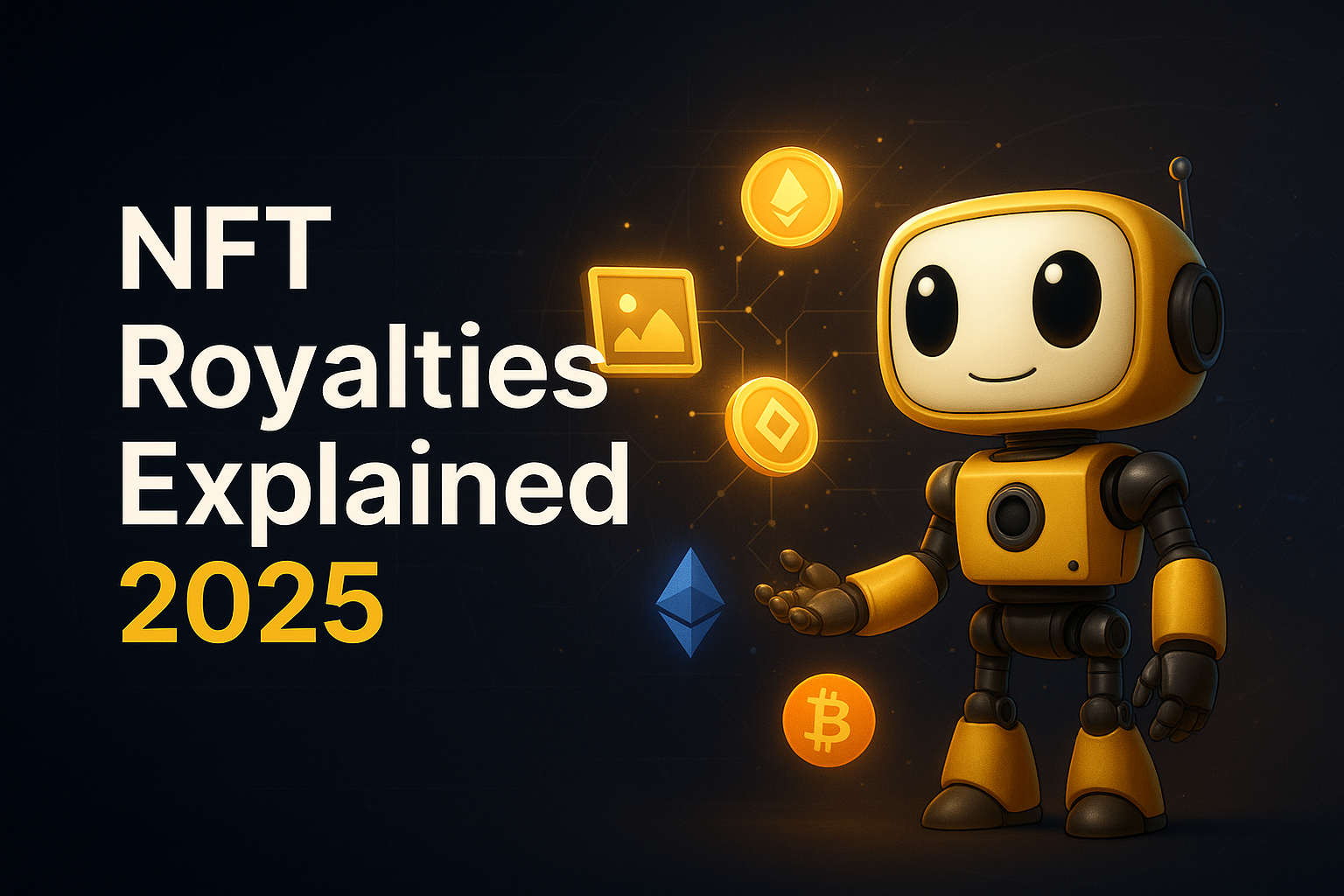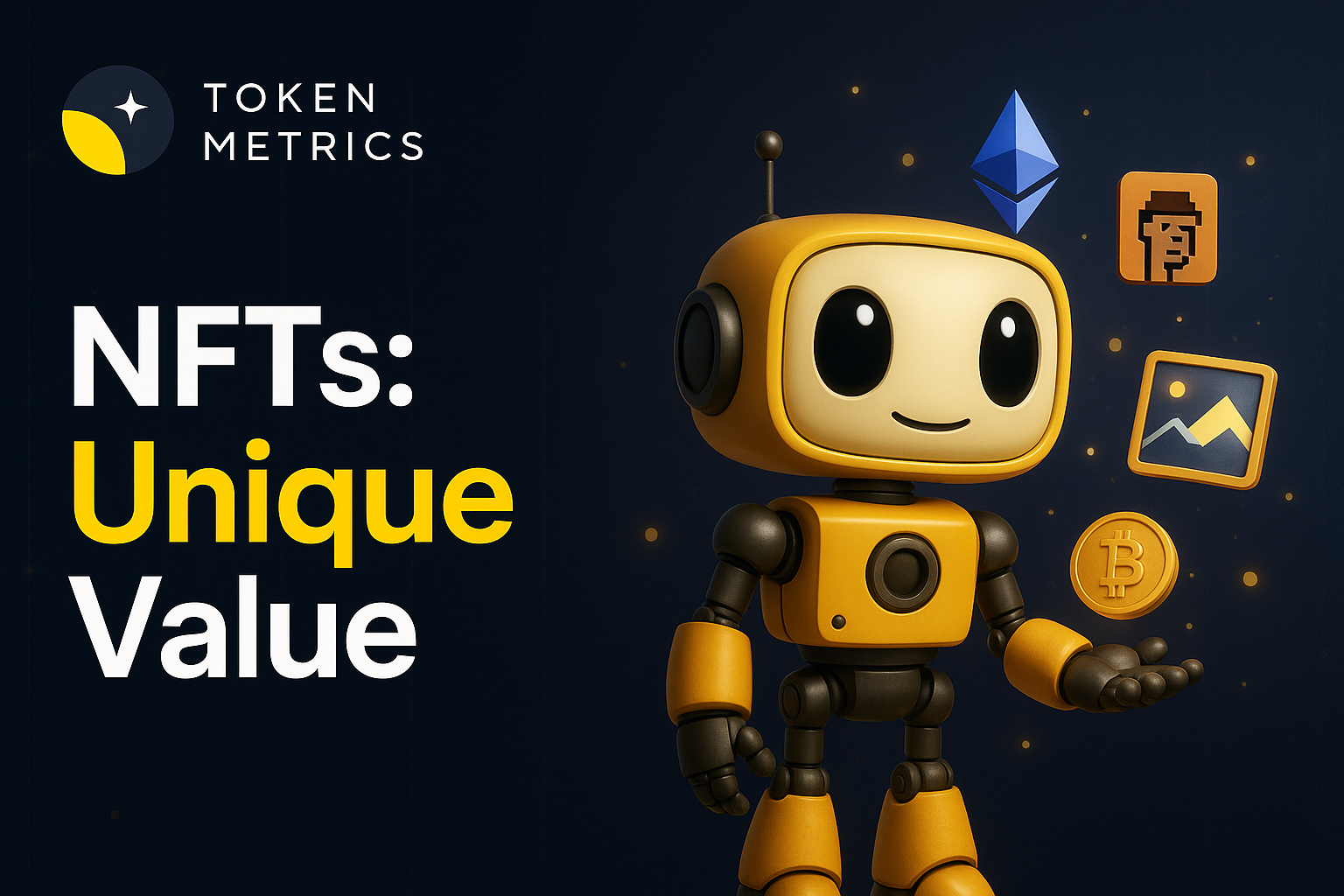For centuries, artists and creators have faced a fundamental challenge: they typically receive payment only once for their work, regardless of how many times it is resold or how much its value appreciates over time. A painter might sell a canvas for $1,000, only to see it resell decades later for millions, with none of those profits returning to the original creator. Non-fungible tokens (NFTs) have disrupted this traditional model through the introduction of NFT royalties—an innovative mechanism that allows creators to earn ongoing compensation every time their digital asset is resold. As the global NFT market expands rapidly, estimated at $80 billion in 2025 and projected to reach $231 billion by 2030, understanding how royalties work in NFTs has become essential for artists, collectors, and investors participating in this dynamic digital asset ecosystem.
The Fundamentals: What Are NFT Royalties?
NFT royalties refer to automated payments that compensate the original creator with a percentage of the sale price whenever their digital asset is resold on secondary markets. Unlike traditional art sales, where artists profit only from the initial sale, NFT royalties create a continuous revenue stream that persists as long as the asset is traded. This ongoing income represents a paradigm shift in how creators earn from their intellectual property.
Typically, the royalty percentage ranges between 5% and 10% of each resale price, though creators can set this rate anywhere from 0% up to 30%, depending on the platform and their preferences. These royalty terms are embedded directly into the NFT's smart contract at the moment of minting, establishing immutable rules that govern all future sale transactions.
For instance, if an NFT creator mints a digital artwork with a 10% royalty and initially sells it for 50 ETH (approximately $85,000 at current prices), they receive that initial payment. When the buyer later resells the NFT for 200 ETH ($340,000), the smart contract automatically sends 20 ETH ($34,000) as royalty payments to the original creator. If the NFT changes hands again at a higher price, the creator continues to receive their royalty percentage indefinitely.
This mechanism revolutionizes creator economics by allowing artists to benefit from the appreciation of their work and participate in new revenue streams generated by the secondary market.
The Mechanics: Smart Contracts and Blockchain Technology
The core technology enabling NFT royalties is smart contracts—self-executing programs stored on a public blockchain that automatically enforce predetermined terms when specific conditions are met. This foundation explains both the power and current limitations of NFT royalties.
When creators mint NFTs on marketplaces such as OpenSea, Rarible, or Foundation, they upload their digital assets and configure smart contract parameters, including the royalty percentage. This information becomes permanently recorded on blockchain networks like Ethereum, Solana, or Polygon, ensuring transparency and immutability.
When a secondary sale occurs on an NFT marketplace that honors royalties, the smart contract executes automatically. The sale transaction divides the payment: the seller receives the proceeds minus the royalty percentage, the marketplace collects its commission (usually between 2% and 5%), and the original creator receives their royalty payment. This entire process happens instantly without manual intervention or third-party enforcement.
The Ethereum community standardized royalty payments through ERC-2981 in July 2021, providing a consistent framework for calculating and distributing royalties across different platforms. However, it is important to note that this standard is advisory rather than mandatory—marketplaces can decide whether or not to implement and enforce these royalty mechanisms.
This optional nature of royalty enforcement has become a significant source of controversy in the NFT market, as some platforms choose to ignore or circumvent royalty payments.
The Benefits: Why NFT Royalties Matter
NFT royalties address long-standing challenges faced by creators and introduce new opportunities for sustainable creative economies. One of the most impactful benefits is the generation of ongoing income for creators. In 2025, over 63% of NFT artists report earning more from secondary sales royalties than from their initial mints.
For emerging artists and musicians, royalty payments can be transformative. For example, musicians using NFT platforms earn an average of $3,400 per track when royalties are factored in, creating sustainable revenue beyond traditional streaming platforms.
NFT royalties also align incentives between creators and collectors. Traditional art markets often create misaligned incentives, where galleries, dealers, and collectors profit from appreciation while artists see none of the upside. NFT royalties ensure creators benefit proportionally as their work gains value, encouraging collectors to support and promote artists and fostering a healthier ecosystem.
Furthermore, knowing they will earn from future resales motivates creators to produce work with enduring appeal rather than chasing fleeting trends. This quality incentive leads artists to invest more time and resources into their digital artwork, anticipating long-term appreciation.
Blockchain technology enhances this system by ensuring transparent provenance tracking and ownership verification, reducing fraud and forgery. This immutable recordkeeping not only builds trust but also facilitates automatic royalty payments, enhancing legitimacy in digital asset markets.
Finally, NFT royalties democratize the market for digital creators. Electronic musician Jaques Green earned approximately $27,000 in royalties from a single track, while digital artist Beeple received $660,000 in automatic compensation from a secondary sale of his "Crossroads" NFT. These examples highlight how royalties empower creators to monetize their intellectual property fairly and create new revenue streams.
The Controversy: Optional Royalties and Market Resistance
Despite their potential, NFT royalties face significant challenges and controversy, primarily due to optional royalty enforcement by major marketplaces. This debate intensified when Sudoswap launched an automated market maker in 2022 that eliminated royalties on secondary sales altogether. This innovation sparked fierce competition among NFT marketplaces, with many platforms reducing or removing fees—including creator royalties—to attract more traders.
Magic Eden, once a strong proponent of royalties, reversed its stance and made royalties optional, allowing buyers to decide whether and how much to pay. OpenSea, the largest NFT marketplace with over 2.4 million monthly active users in Q2 2025, also adopted optional royalty models, mandating only a minimal 0.5% royalty for collections without on-chain enforcement.
These changes led to a 12% increase in buyer activity but simultaneously caused an 18% reduction in creator revenues. This tradeoff highlights a significant tension between market efficiency and fair creator compensation.
Research from 2025 shows that higher royalty percentages correlate with decreased NFT market prices and resale likelihood. Specifically, a one standard deviation increase in royalty rates results in a 7.04% drop in market prices and a 4.8% reduction in resale probability. From buyers’ perspectives, royalties add costs that reduce potential profits, making high-royalty NFTs less attractive to speculators.
Technical Workarounds and Enforcement Challenges
Beyond voluntary non-compliance, technical methods exist that allow royalty circumvention, complicating enforcement efforts. One such method is "NFT wrapping," where an NFT is placed inside a smart contract wrapper that disguises it as a different token. This allows trading without triggering royalty payments. Additionally, peer-to-peer NFT transfers between wallets bypass marketplace smart contracts entirely, eliminating royalty enforcement.
The fundamental challenge lies in distinguishing between genuine sale transactions that should pay royalties and legitimate transfers such as gifting, moving assets between wallets, or using NFTs in decentralized applications. Smart contracts cannot easily discern intent, making blanket royalty enforcement difficult.
Some platforms have implemented allowlist membership systems that restrict NFT transfers to approved marketplaces guaranteeing royalty payments. However, this approach limits composability and openness, restricting how NFTs can be used and traded, which diminishes their utility.
The Hedera network attempts to address these challenges with on-chain custom royalties honored for all secondary sales plus fallback fees charged during transfers without exchanged value. However, blockchain interoperability means NFTs can move across chains with varying rules, complicating royalty enforcement further.
The Role of Analytics in NFT Investment Decisions
Given the complexity of NFT royalties, varying enforcement across platforms, and the presence of royalty circumventing marketplaces, analytics tools have become crucial for investors and collectors. These tools help verify ownership, track royalty payments, and evaluate the impact of royalty percentages on asset value and liquidity.
By analyzing how royalties affect resale prices and market activity, investors can make informed decisions about which NFTs to buy or sell. Creators also use analytics to optimize royalty percentages and identify marketplaces that support fair compensation.
Emerging Models and Future Directions
Innovators in the NFT space are exploring new royalty enforcement designs to balance creator compensation with market efficiency. One approach is the staking model, where creators stake money or assets to enforce royalty payments. If a creator prevents transfers without royalties, their stake may be slashed, providing an economic incentive to comply.
Shared ownership and reclaim mechanisms are also being developed to allow multiple creators or portfolio companies to receive royalties fairly. These models represent a significant tradeoff between flexibility and enforcement but could become key factors in the evolution of the NFT market.
As new marketplaces emerge, creators face the challenge of ensuring royalties are respected across platforms. While existing royalty designs restrict some flexibility, they provide fair compensation to asset and title owners. The ongoing battle against royalty circumvention by bad actors will likely continue shaping the legal and technical landscape of NFTs.
Conclusion
Understanding how royalties work in NFTs is essential for anyone involved in the digital asset ecosystem. NFT royalties refer to smart contract–enabled payments that provide creators with ongoing income from secondary sales, revolutionizing traditional models of intellectual property monetization. While the technology offers transparent, automatic royalty payments, enforcement remains inconsistent due to optional marketplace policies and technical workarounds.
Despite these challenges, NFT royalties create new revenue streams, align incentives, and empower artists and creators to benefit fairly from their work’s appreciation. As blockchain technology and marketplace designs evolve, royalty enforcement mechanisms will likely improve, ensuring that creators receive fair compensation in the burgeoning NFT market. For artists, collectors, and investors alike, staying informed about royalty mechanics, enforcement issues, and emerging solutions is a key factor in navigating the future of non-fungible tokens.
How Token Metrics Empowers NFT Investors and Creators
Token Metrics equips NFT investors and creators with cutting-edge analytics to navigate royalty standards, assess marketplace enforcement, and identify opportunities for fair compensation in the evolving NFT landscape.
Frequently Asked Questions
What are NFT royalties and how do they work?
NFT royalties are automatic payments sent to creators each time their NFTs are resold on compatible marketplaces. This is typically accomplished through smart contracts on blockchain platforms, which are programmed to pay a percentage (e.g., 5-10%) of every secondary sale directly to the original creator.
Are NFT royalties guaranteed on all marketplaces?
No, NFT royalty enforcement is optional. Some marketplaces, like OpenSea and Rarible, support automatic royalties, while others may not honor them or allow buyers and sellers to opt out. The ERC-2981 standard recommends royalty guidelines but does not make enforcement mandatory.
Can creators set their own NFT royalty percentage?
Yes, most NFT minting platforms allow creators to choose their royalty percentage at the point of minting, usually ranging between 0% and 30%. Higher royalty rates can impact the NFT’s resale attractiveness and liquidity.
Is it possible to bypass NFT royalties?
Yes, NFT royalties can be bypassed using techniques such as peer-to-peer wallet transfers, technical workarounds like NFT wrapping, or by using marketplaces that do not honor royalty payments. There is an ongoing debate and technical evolution to improve royalty enforcement.
Do NFT royalties apply to physical art sales?
NFT royalties are unique to digital assets and are programmatically enforced on blockchain networks. They do not apply to resales of physical art unless that art has a digital NFT representation with an embedded royalty smart contract.



.svg)


.png)




%201.svg)
%201.svg)


%201.svg)









.svg)




.png)